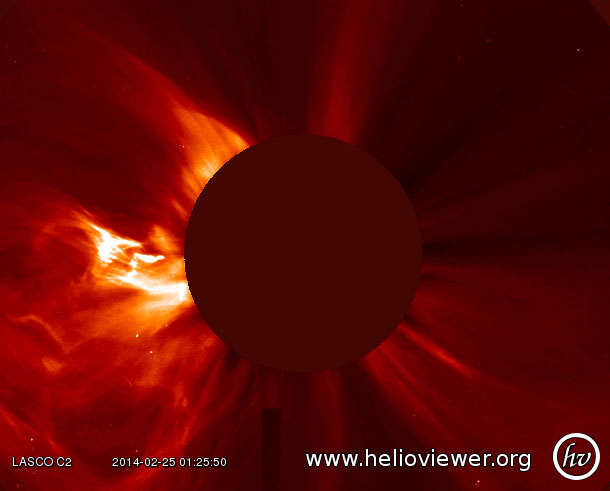Watch the video above: NASA’s Solar Dynamics Observatory images the Feb. 25 X-flare in different wavelengths.

TORONTO – Early on Tuesday, the sun erupted with a powerful solar flare that, had it been Earth-directed, could have caused problems for us here at home.
Instead, the strong X4.9-class solar flare (flares are measured by the amount of x-rays they emit, which is classified by the letters C, M and to the strongest, X) was ejected away from Earth, just as the sunspot responsible for it began to rotate toward Earth.
Solar flares are caused by entanglements in magnetic field lines on the sun. When the field lines reconnect they unleash a tremendous amount of energy. Propelled by the solar wind, they can arrive on Earth within minutes. If Earth-facing, they can disrupt satellites or power grids, as happened in 1989 in Quebec.
READ MORE: Giant sunspot erupts with large solar flare, chance of northern lights
What’s interesting is that the sunspot responsible for the solar flare is making its third trip around the sun. While it’s not unusual for sunspots to last for several days, sunspot AR1990 is showing unusual persistence. It is also very large.
- High benzene levels detected near Ontario First Nation for weeks, residents report sickness
- Ontario takes action against chemical plant after Aamjiwnaang First Nation residents fell ill
- Enter at your own risk: New home security camera aims paintballs at intruders
- Fishing vessel with crane, net arrives in Zeballos for orca calf rescue
Like Earth, the sun rotates. But unlike Earth, the period of rotation depends on where you’re standing. For the centre of the sun, it’s roughly 26 days. Sunspots can live on the sun’s surface for days, but it’s unusual for it to last this long.
Sunspots are given designations. The one responsible for yesterday’s solar flare was AR1990, formerly known as AR1667 (each time a sunspot reemerges, it is given a new number).
Since the sunspot is only just turning toward Earth, it wasn’t directed at our planet, but will be in a better position to affect Earth within the next week.
Though potentially hazardous, solar flares can also trigger beautiful displays of the northern and southern lights.
READ MORE: Spectacular northern lights dazzle the skies across Canada
The Space Weather Prediction Center calculates that there is only a 10 per cent chance of another X-class flare, with a 60 per cent chance of somewhat weaker M-class flares over the next 48 hours. However, as the sunspot turns toward Earth, there may be a greater chance.



Comments